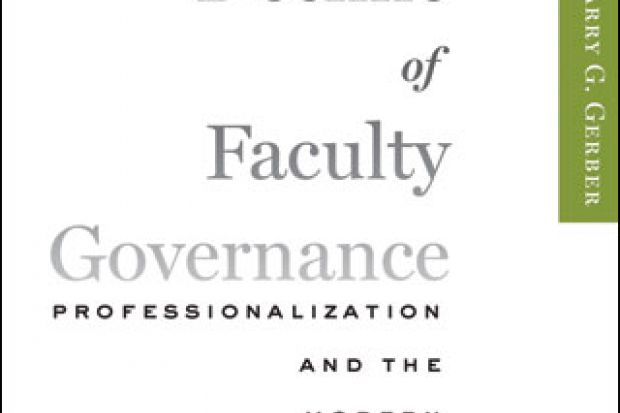What role (if any) do faculty play in the governance and management of the modern university? Are the academic lunatics in charge of the university asylum (as is notably still the case at the universities of Oxford and Cambridge) or merely hired help in gowns subject to the whims of the trustees/board and of the administration, aka the senior management/leadership team? We turn to a US historian, Larry Gerber, for consideration of the rise and now the decline of faculty power in the context of the modern marketised and commercialised factory-university.
We call it “collegiality” while US higher education literature refers to “shared governance” in terms of the university being, theoretically and ideally, run collectively and constitutionally by a carefully balanced combination of lay trustees/board members, president/vice-chancellor and his/her many full-time little helpers, and professors/academics. The opposite of the collegial shared-governance university is the managed corporatist institution, allegedly more nimble and flexible in responding to the demands of the market in the age of mass higher education and also to the requirements for accountability to government in the age of performance indicators.
The lay founders of the early US universities and colleges, and later the states as the creators of higher education institutions, were certainly not going to hand total or indeed any power to the “instructors” on the Oxbridge colleges model. Similarly, the majority lay members of the English civic institutions established in the 1890s and 1900s were determined to be in charge of what they were financing – and in the case of the University of Birmingham, did not even allow the professors of the Senate to sully the grand council chamber by meeting there. As Gerber shows, however, by the 1960s, faculty in the US came to have a key role in shared-governance institutional decision-making. In the UK, they did so de facto if not strictly de jure at the time of the creation of the post-Robbins “new universities” (think of the odious lecturer Howard Kirk manipulating committee meetings in Malcolm Bradbury’s The History Man).
The European model of powerful faculties and their elected deans and rectors is more similar to the Scottish constitutional regime for universities than to the US model of “strong external governing boards and powerful presidents”. In the English context, after a golden age in the 1960s and 1970s of what A. H. Halsey called “donnish dominion”, the lay council has reasserted its dormant formal dominance since the 1985 Jarrett report and the formation of the Committee of University Chairmen and the rise of the CEO-style vice-chancellor. Globally, the norm is or will become the US corporatist model, but with strong elements of collegial behaviour within world-class research universities.
In the US, Gerber says, “the development of a significant faculty role in governance was a slow and uneven process” from the latter decades of the 19th century, associated with the creation of the “Great American University” and with the professionalisation of the academic career. This is a process thrown into reverse in recent decades, not only by the casualisation of the academic labour force but also by academics themselves disengaging from institutional management (and undergraduate teaching) so as to fixate on research productivity as the sole driver of career success for the academic kulak.
Gerber asks whether the future of the Great American University and its commitment to liberal education will be fatally undermined by the fading out of shared governance in the face of the marketised, mangerialised, commercialised, corporatised model of university management, which he sees as symptomatic of a wider naive adulation of market models over the traditional public sector delivery of society’s services, and also of the lack of trust in professional groups. Increasing student consumerism impacts on the rickety status of the professor, who is perhaps reverting to being the “instructor” of the colonial era, particularly in the growing for-profit sector of the US academy.
He concludes gloomily that, if these trends continue, “the global pre-eminence of American colleges and universities is at risk”. Hence academics must “reassert their commitment to a broad conception of their professional rights and responsibilities”. In fact, the dominance of the US in the league tables of research elite institutions will likely be unaffected over coming decades. What Gerber is really writing about is the ability of the US economy to finance – and the willingness of the US body politic to allow – academics further down the hierarchy of public higher education institutions to continue to enjoy the lifestyle that they had in their brief era of donnish dominion.
The Rise and Decline of Faculty Governance: Professionalization and the Modern American University
By Larry G. Gerber
Johns Hopkins University Press, 264pp, £38.50 and £19.50
ISBN 9781421414621 and 4638
Published 20 April 2015
Register to continue
Why register?
- Registration is free and only takes a moment
- Once registered, you can read 3 articles a month
- Sign up for our newsletter
Subscribe
Or subscribe for unlimited access to:
- Unlimited access to news, views, insights & reviews
- Digital editions
- Digital access to THE’s university and college rankings analysis
Already registered or a current subscriber? Login





